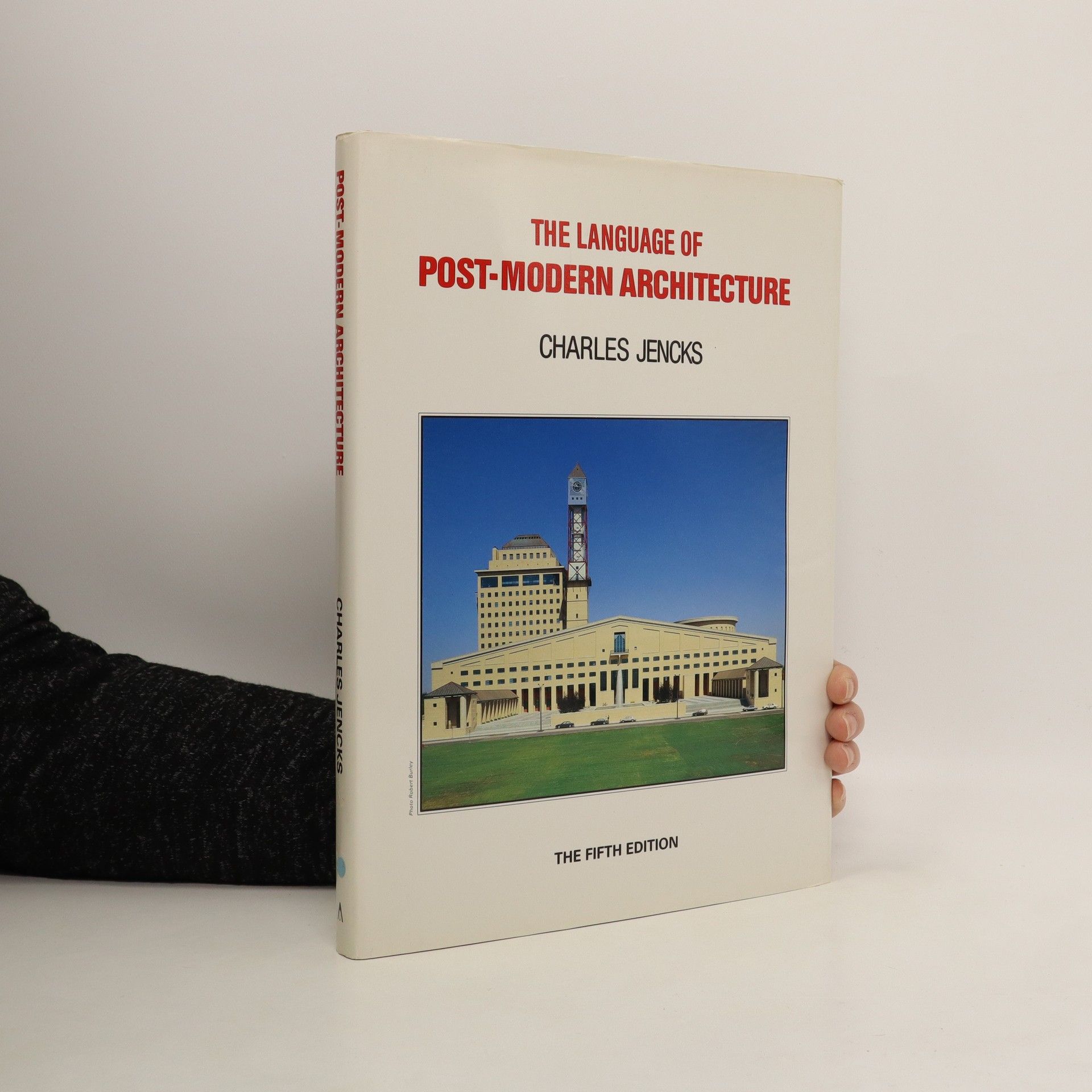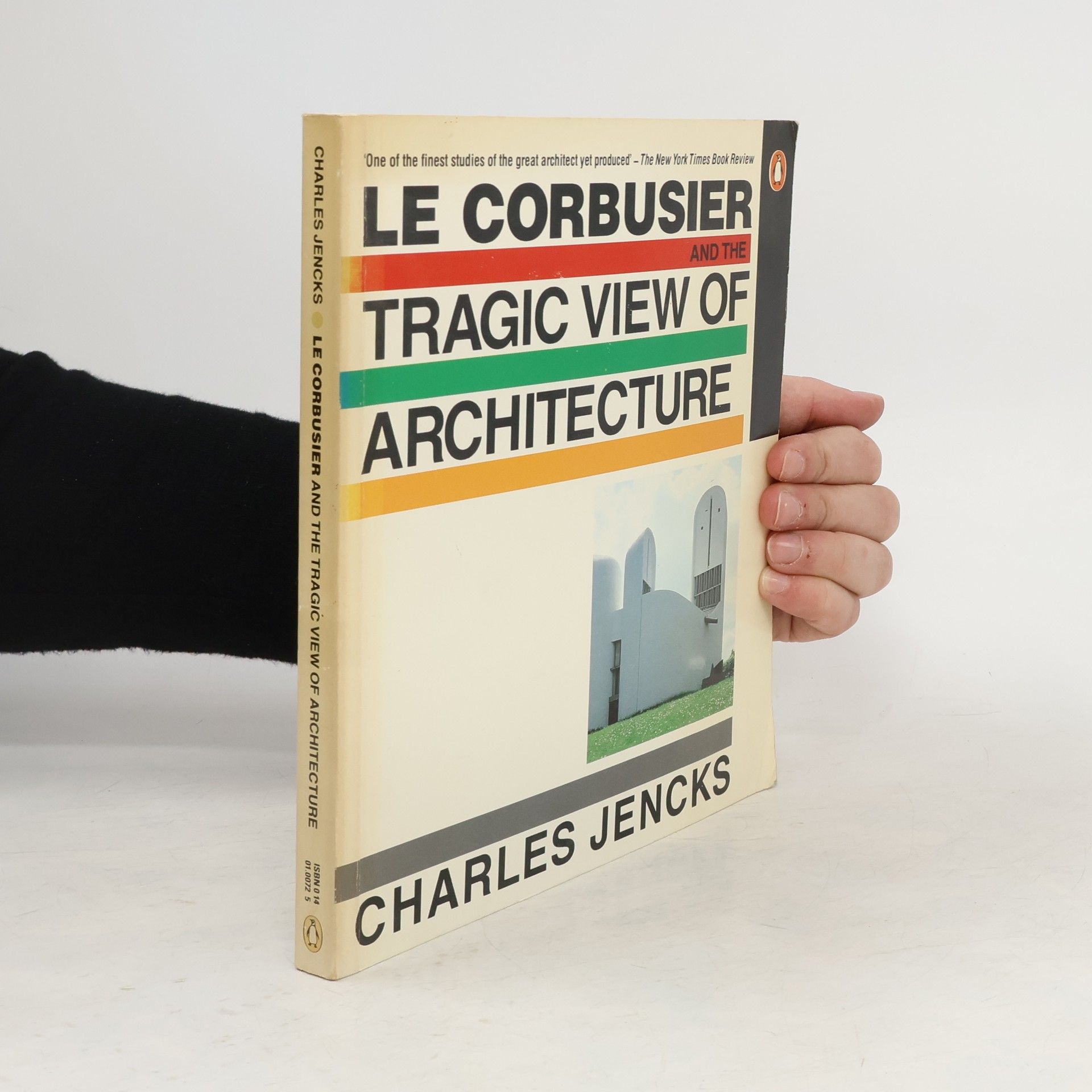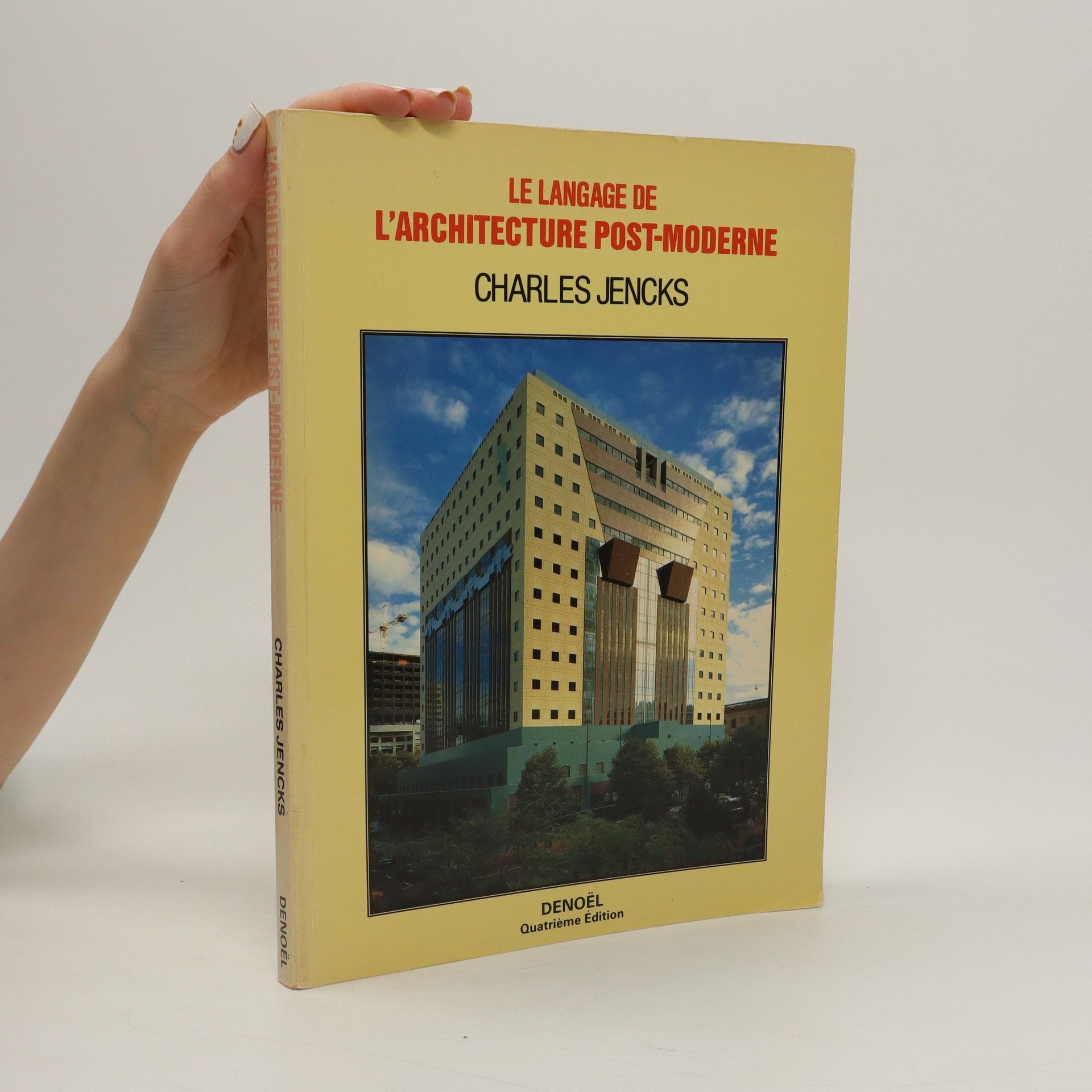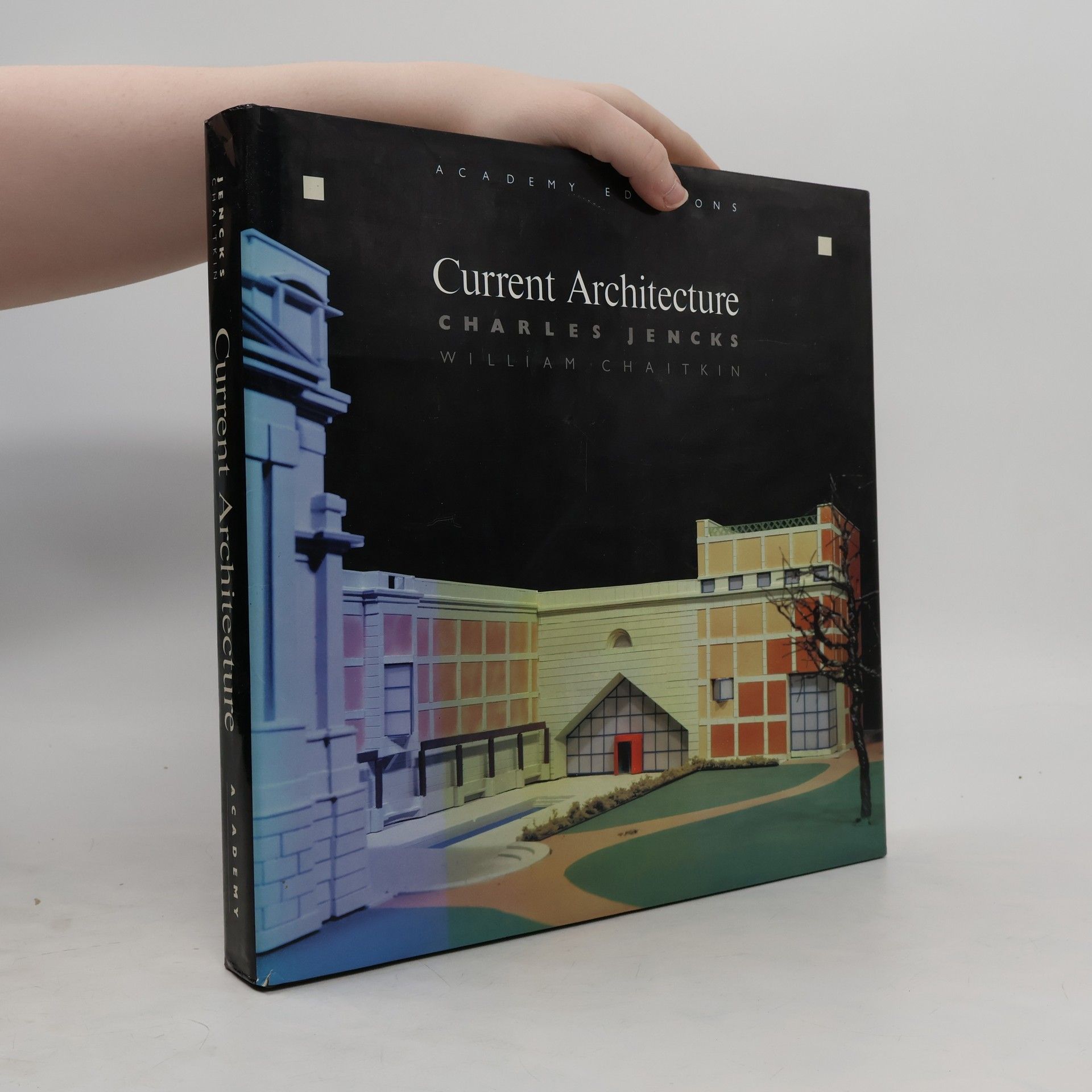Charles Jencks Livres
Charles Alexander Jencks est un théoricien et critique d'architecture, architecte paysagiste et designer américain. Ses écrits explorent de manière critique les mouvements du modernisme et du postmodernisme, les rendant incontournables dans le discours architectural. Il se penche sur l'évolution des styles architecturaux et leurs implications culturelles plus larges. Son approche, façonnée par des mentors influents, est évidente dans ses conceptions distinctives de sculptures paysagères.






In The Story of Post-Modernism, Charles Jencks, the authority on Post-Modern architecture and culture, provides the defining account of Post-Modern architecture from its earliest roots in the early 60s to the present day.
Traces the modern architect's career, and examines his view of truth and the human condition as evidenced in his architectural designs, paintings, and writings.
When this book first appeared in 1972, it heralded a new era in architecture and design, moving beyond the rigid doctrines of modernism. Charles Jencks and Nathan Silver presented a manifesto for a generation that embraced improvisation and resourcefulness to tackle real-world challenges. The book quickly became a DIY guide for disillusioned citizens of the 1970s, introducing the term "adhocism" into the design lexicon and establishing it as a cult classic. Now re-released, it includes new reflections by Jencks and Silver on four decades of adhocism, along with fresh illustrations highlighting its ongoing relevance. Adhocism has always existed, exemplified by figures like Robinson Crusoe, who improvised tools from his surroundings. As a design principle, it encourages everyday creativity—transforming a bottle into a candleholder or a tractor seat into a chair. More broadly, adhocism influences various activities, from play to architecture and political movements. Engagingly written and richly illustrated with examples from diverse fields, the book advocates for a focus on practical solutions over strict adherence to rules, emphasizing that problem-solving often arises from trial and error rather than sudden insights.
"The New Paradigm in Architecture tells the story of a movement that has changed the face of architecture over the last forty years. Starting with the counter culture of the 1960s and the call for a complex urbanism by Jane Jacobs and a complex architecture by Robert Venturi, it shows how such demands started to be realised by the 1990s, aided by computer design. Often curved, warped and fractal in shape, it is more convivial, sensuous and articulate than the modern architecture it challenges. Carried forward by architects such as Frank Gehry, Daniel Libeskind and Peter Eisenman, it has also become a leading approach in many schools and offices around the world. The computer is now at its heart but its history, which Charles Jencks traces, is built on the desire for an architecture that communicates with its users, and one based on the heterogeneity of our cities and global culture." "The New Paradigm in Architecture shows the key projects defining Post-Modernism and concentrates on the major protagonists, Robert Venturi, James Stirling, Mans Hollein, Aldo Rossi, Rem Koolhaas, Peter Eisenman, Daniel Libeskind and Frank Gehry." The book is comprehensively illustrated with over 390 photographs, plans, diagrams and evolutionary trees describing the major trends.
The Truth About the Truth
De-confusing and Re-constructing the Postmodern World
- 272pages
- 10 heures de lecture
Includes essays and excerpts from the works of prominent modern thinkers such as Umberto Eco, Jacques Derrida, and Isaiah Berlin among others.
No Dice
- 112pages
- 4 heures de lecture
Risk is embedded in almost every corner of the popular culture we consume; its hidden exposure is a new version of disaster capitalism. No Dice explores the messy world of gambling, addiction and risk that we encounter daily, from childhood through adulthood, to ask - is it worth the risk? And more so, do we even know what risks we're taking?
This book tells the story of one of the most important gardens in Europe, created by the architectural critic and designer Charles Jencks and his late wife, the landscape architect and author Maggie Keswick. The Garden of Cosmic Speculation is a landscape that celebrates the new sciences of complexity and chaos theory and consists of a series of metaphors exploring the origins, the destiny and the substance of the Universe. The book is illustrated with year-round photography, bringing the garden's many dimensions vividly to life.
Landforms are a fast-developing art form that enjoy a wide following today, because of their multiple uses and their enveloping beauty. As formal landscapes that often arise from necessity - recycling a coal site for human use or making new use of excess earth - they are a pleasure to walk over and through.In this collection of his recent work, Charles Jencks explains his particular approach to the landform. Like the prehistoric earthworks of Britain that have been an inspiration, such as Stonehenge, his landforms contain cosmic symbolism, and they draw together sculpture, epigraphy, water, gardens, scrap metal and architecture. They address perennial themes - identity, patterns of nature, death and the power of life - but in a contemporary way, based on the insights of science. So Jencks portrays universal aspects of DNA, the spacetime warp of a black hole, the extraordinary way cells divide and unite and some basic forms of life.Other designs include sharp comments on recent a water garden of war in France critiques the 2003 invasion of Iraq using 'waterpults' and 'hose-guns' among other interactive features; a white garden made from birch trees, flying bones and computer graphics deals with some fatal consequences of modernity. Jencks addresses, with wit and irony, some of the strange possibilities that arise with extra-large landforms. Northumberlandia, perhaps the largest human figure ever made, presents the question of which body parts one can walk on safely, which are dangerous and which need to be suppressed. What became perhaps the heaviest work of art in the world, at 20 million tons, was also the opportunity to transform a large open-cast mine into a dynamic landscape of giant mounds and sculpted lakes.As in his The Garden of Cosmic Speculation , to which this book is a sequel, Jencks seeks to define a new landscape iconography based on forms and themes that may be eternal, in the sense that they crystallise nature's laws, some of which have been recently discovered. To see a world in a grain of sand was a poetic quest of William Blake and, in a different sense, to find the universe in a ritual landscape was a goal of prehistoric cultures. Jencks allies these spiritual affinities with the view of science that stresses the common patterns that underlie all parts of the cosmos, thus making them like our home planet, and the universe in a landscape.


